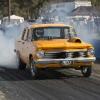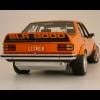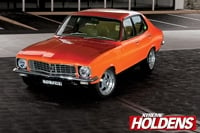Now this come from experience with a flywheel coming loose too often in another car. We did almost all that you ahve done and found out that the crankshaft was cracked in No6 B/E journal and not far from falling apart with major consequences.
Before you go to doing more radical things get under the car and before you pull everything apart put a dial indicator on the outer clutch face of the flywheel and get a mate to turn it over slowly by hand and check the run out in the flywheel. (Take the plugs out first it will be easier to turn over)
There are specs in the workshop manuals as to what the runout tolerances are but for what you are doing it should be absolutely minimal.
If the run out is excessive it could be one of two things either a warped flywheel or a bent/cracked crankshaft.
Once the runout has been determined
pull the flywheel off take it to the engine builder and get him to check it for warpness/bend.
being an ultra lightweight flywheel there is every chance that this could be warped due to high revs and heat.
If the flywheel is ok then it is further in the engine.
Next is to check the end of the crank for run out
If there is any/too much runout in the crank then that will be what is causing the bolts to break/loosen.
The cause may not be that it is out of balance but the fact that it is either bent or cracked.
I would suspect no 6 B/E journal allowing the flange end of the crank to bend if the problem is in the crankshaft
cheers
peter
thanks piquet, youve given me something to think about.
The FJ ran around for 10 years with a cast iron flywheel, copper shim and red loctite, didnt rattle loose once. this is using 7/16 arp 351 clevo nascar bolts (dont have to cut them to size)
put a steel flywheel on it along with a roller cam. Used the copper shim use moly lube and did what arp told us to.
took 3 years to come off, so scrapped the copper shim but still used moly lube, came off in 4 meetings.
did the same thing over again and it took 2 meetings, 1 meeting and then eventually only 2 runs down the quarter before bolts loose (cant push the clutch in because they are touching the bolts). Maybe crank is cracked or bent?
blue motor crank btw
Edited by greens nice, 18 March 2010 - 08:12 PM.




 View Garage
View Garage














